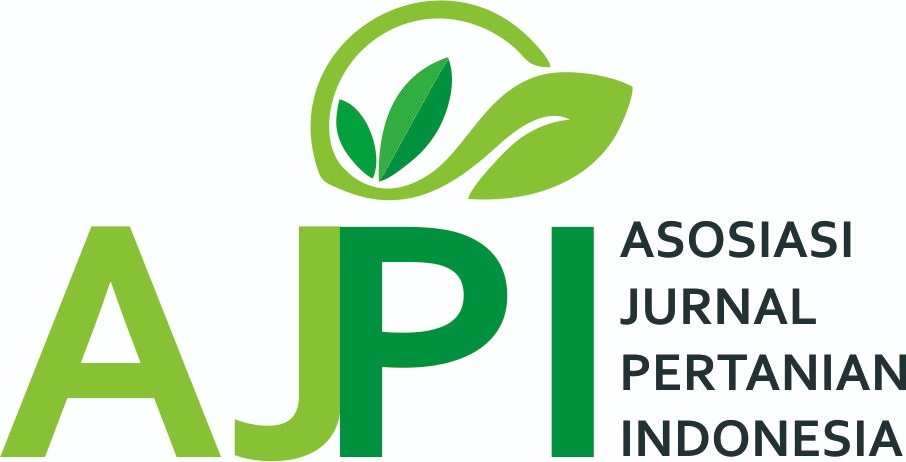Microstructure With Scanning Electron Microscope And Sensory Characteristics In Nori Red Algae (Gracilaria Gigas)
Abstract
Gracilaria is a red algae seaweed (Rhodopyceae) and can be developed by being cultivated in the sea, ponds and river estuaries. Red seaweed of the Gracilaria sp species is found and cultivated as a source of raw material for the production of food grade agar in Indonesia. Gracilaria gigas type seaweed has the potential as a raw material in the manufacture of nori products. Utilization of Indonesian local seaweed, will minimize imports of seaweed from various seaweed-producing countries. Gracilaria gigas red seaweed contains 5.84% water content, 0.44% fat content, 7.27% crude fiber, 23.76% protein, 11.92% ash, 180.52% carbohydrates and 19,922 IC50 antioxidants. mg AAE/g. Acceptance of Nori made from Gracilaria gigas seaweed using sensory analysis with the RATA (Rate All That Apply) method, sensory testing was carried out using 8 test parameter attributes, resulting for the parameters tested for salty taste of 2.05, seaweed taste of 1.50, aroma seaweed 1.35, crunchy texture 1.50, smooth texture 2.00, thick texture 1.35, green color 1.25 and elasticity 1.50. For microstructural analysis using a Scanning Electron Microscope with a magnification of 5000x.
Downloads
References
Andarwulan, N. & Faradilla, F., 2012, Pewarna Alami Untuk Pangan, 24, SEAFAST Center, Institut Pertanian Bogor, Bogor.
Anita, Z., Akbar, F., & Harahap, H. 2013. Pengaruh penambahan gliserol terhadap sifat mekanik film plastik biodegradasi dari pati kulit singkong. Jurnal Teknik Kimia USU, 2(2).
Ares, G., Bruzzone, F., Vidal, L., Cadena, R. S., Giménez, A., Pineau, B., ... & Jaeger, S. R. (2014). Evaluation of a rating-based variant of check-all-that-apply questions: Rate-all-that-apply (RATA). Food Quality and Preference, 36, 87-95.
Bertuzzi, M. A., Gottifredi, J. C., & Armada, M. 2012. Mechanical properties of a high amylose content corn starch based film, gelatinized at low temperature. Brazilian Journal of Food Technology, 15(3), 219-227.
Chan, Y. Y., Kim, K. H., & Cheah, S. H. 2011. Inhibitory effects of Sargassum polycystum on tyrosinase activity and melanin formation in B16F10 murine melanoma cells. Journal of Ethnopharmacology, 137(3), 1183-1188.
De Almeida, C. L. F., Falcão, D. S., Lima, D. M., Gedson, R., Montenegro, D. A., Lira, N. S., ... & Batista, L. M. 2011. Bioactivities from marine algae of the genus Gracilaria. International Journal of Molecular Sciences, 12(7), 4550-4573.
Dinas Kelautan dan Perikanan. 2006. Pengolahan Rumput Laut. Dinas Kelautan dan Perikanan. http://www.dkp.gov.id Diakses tanggal 25 September 2016.
Distantina, S., Anggraeni, D. R., & Fitri, L. E. (2012). Pengaruh Konsentrasi dan Jenis Larutan Perendaman terhadap Kecepatan Ekstraksi dan Sifat Gel Agar-agar dari Rumput Laut Gracilaria verrucosa. Jurnal Rekayasa Proses, 2, 10-14. Universitas Sebelas Maret. Surakarta.
Dwiyitno. 2011. Rumput Laut Sebagai Serat Pangan Potensial. Squalen. Balai Besar Riset Pengolahan Produk dan Bioteknologi Kelautan dan Perikanan. Vol 6(1) : 19-17
Fu, X. T., & Kim, S. M. (2010). Agarase: review of major sources, categories, purification method, enzyme characteristics and applications. Marine Drugs, 8(1), 200-218.
Hanani, E., Mun’im, A. & Sekarini, R. 2005. Identifikasi Senyawa Antioksidan dalam Spons Callyspongia sp dari Kepulauan Seribu.
Herliany, N. E., J. Santoso, dan E. Salamah. 2013. Karakteristik biofilm berbahan dasar karagenan. Jurnal akuatika 4(1) : 10-20
Imeson, A. P. 2012. Thickening and gelling agents for food. Springer Science & Business Media.
Kenji, G. M., Mwalugha, H. M., Mwasaru, M. A., & Wakibia, J. G. 2017. Preliminary Studies On The Proximate Composition Of Some Selected Seaweeds From Mkomani And Kibuyuni, Kenya.
Kim, J. K., Park, H. G., Kim, C. R., Lim, H. J., Cho, K. M., Choi, J. S., ... & Shin, E. C. (2014). Quality evaluation on use of camellia oil as an alternative method in dried seaweed preparation. Preventive Nutrition and Food Science, 19(3), 234.
Loupatty, V. D. (2014). Nori nutrient analysis from seawed of porphyra marcossi in Maluku ocean. EKSAKTA: Journal of Sciences and Data Analysis, 34-48.
Loupatty, V. D. 2015. Nori Nutrient Analysis from Seawed of Porphyra marcossi in Maluku Ocean. Eksakta: Jurnal Ilmu-Ilmu MIPA, 14(2), 34-48.
Matanjun, P., Mohamed, S., Mustapha, N. M., & Muhammad, K. 2019. Nutrient content of tropical edible seaweeds, Eucheuma cottonii, Caulerpa lentillifera and Sargassum polycystum. Journal of Applied Phycology, 21(1), 75-80.
Matsushima, R., Danno, H., Uchida, M., Ishihara, K., Suzuki, T., Kaneniwa, M., ... & Tsuda, M. 2010. Analysis of extracellular alginate lyase and its gene from a marine bacterial strain, Pseudoalteromonas atlantica AR06. Applied microbiology and biotechnology, 86(2), 567-576.
Maurinho, E. P. 2015. Pengaruh penambahan Karagenan dan CaCl2 terhadap Sifat fisik dan Kimia Ajitsuke Nori Imitasi Cincau Hijau (Premna oblongifolia Merr). FTP. Universitas Brawijaya. Malang.
McHugh, D. J. (2003). A guide to the seaweed industry FAO Fisheries Technical Paper 441. Food and Agriculture Organization of the United Nations, Rome, 110.
Nisizawa, K. (2002). Seaweeds kaiso. Japan Seaweed Association. Tokyo-USA Marine Biological Institute.
Ogawa, H., Oohusa, T., Saito, T., Iso, N., Mizuno, H., & Fujino, A. (1991). Tekstur nori Porphyra spp.Journal of Fisheries Society of Japan, 57(2), 301-306.
Copyright (c) 2022 Pinctada Putri Pamungkas, Asriati Djonu

This work is licensed under a Creative Commons Attribution-ShareAlike 4.0 International License.
Author retains the copyright and grants the journal the right of first publication of the work simultaneously licensed under the Creative Commons Attribution-ShareAlike 4.0 License that allows others to share the work with an acknowledgement of the work's authorship and initial publication in this journal













